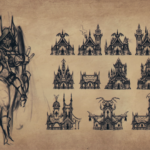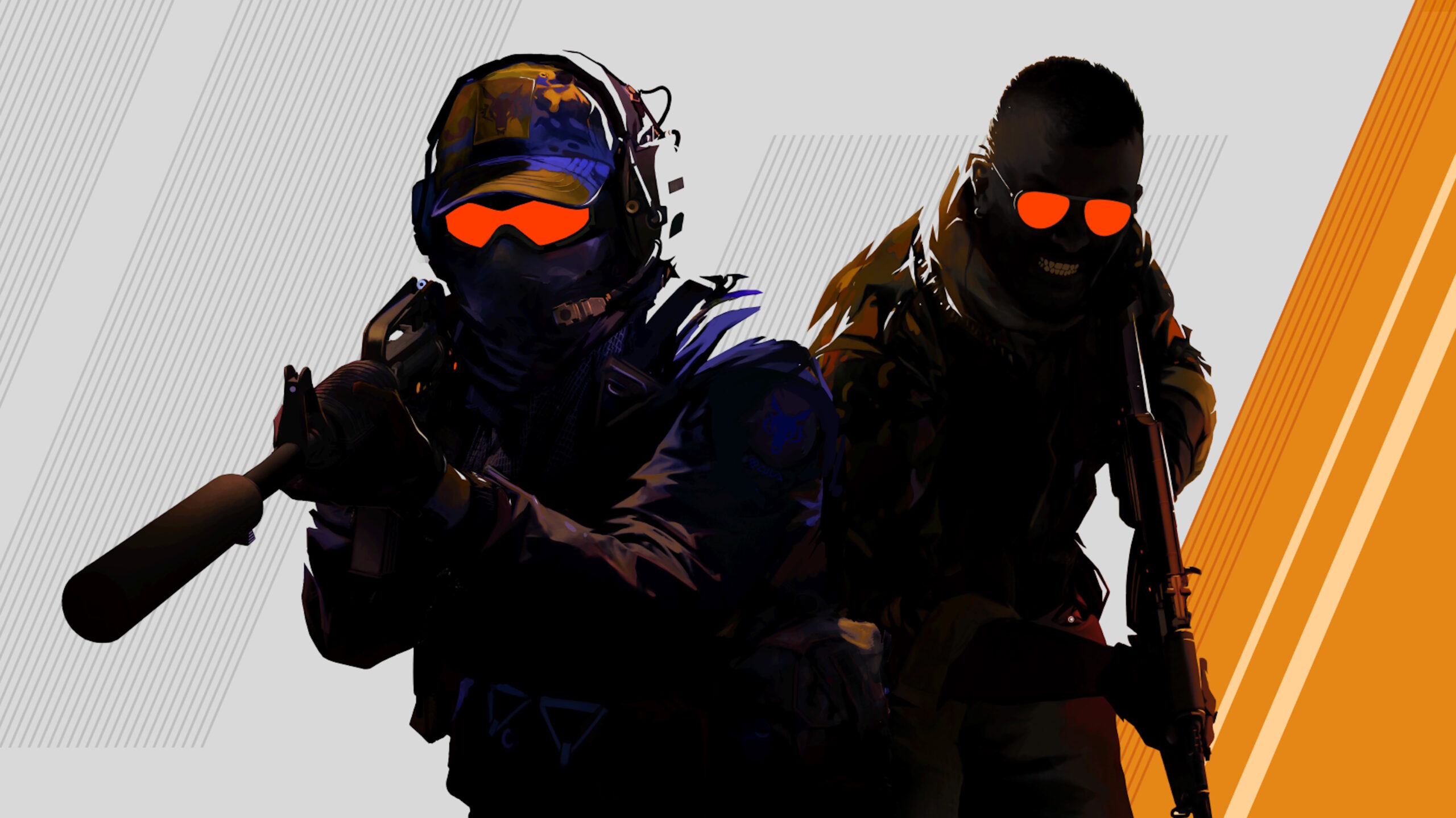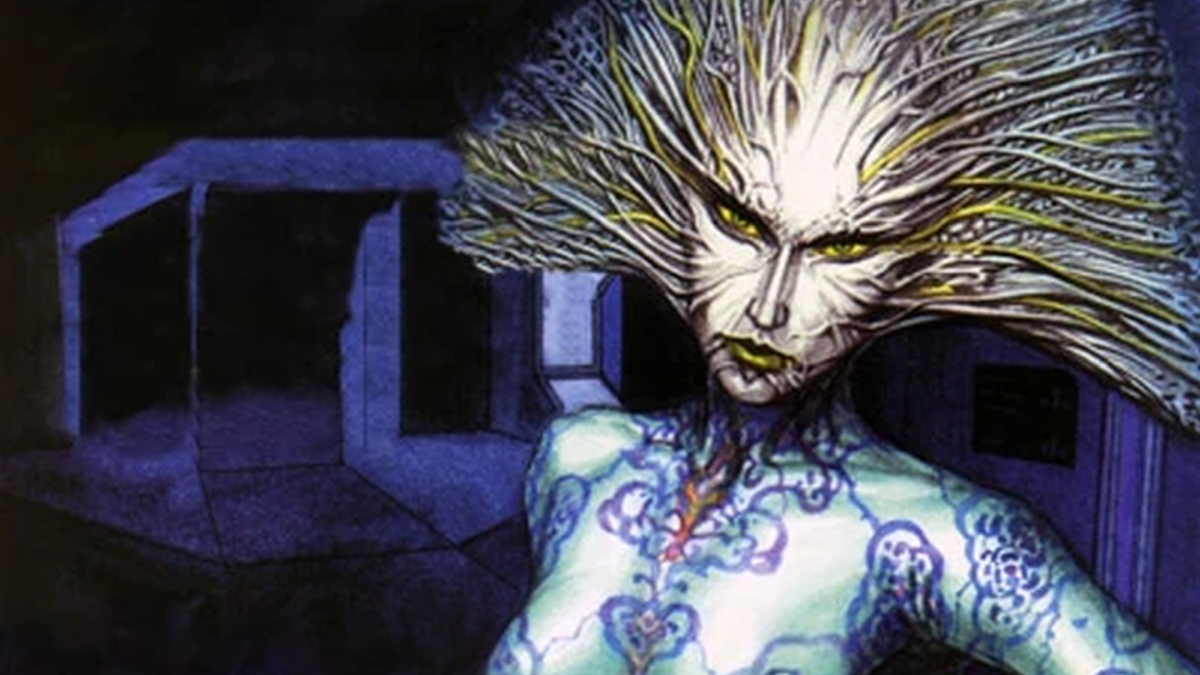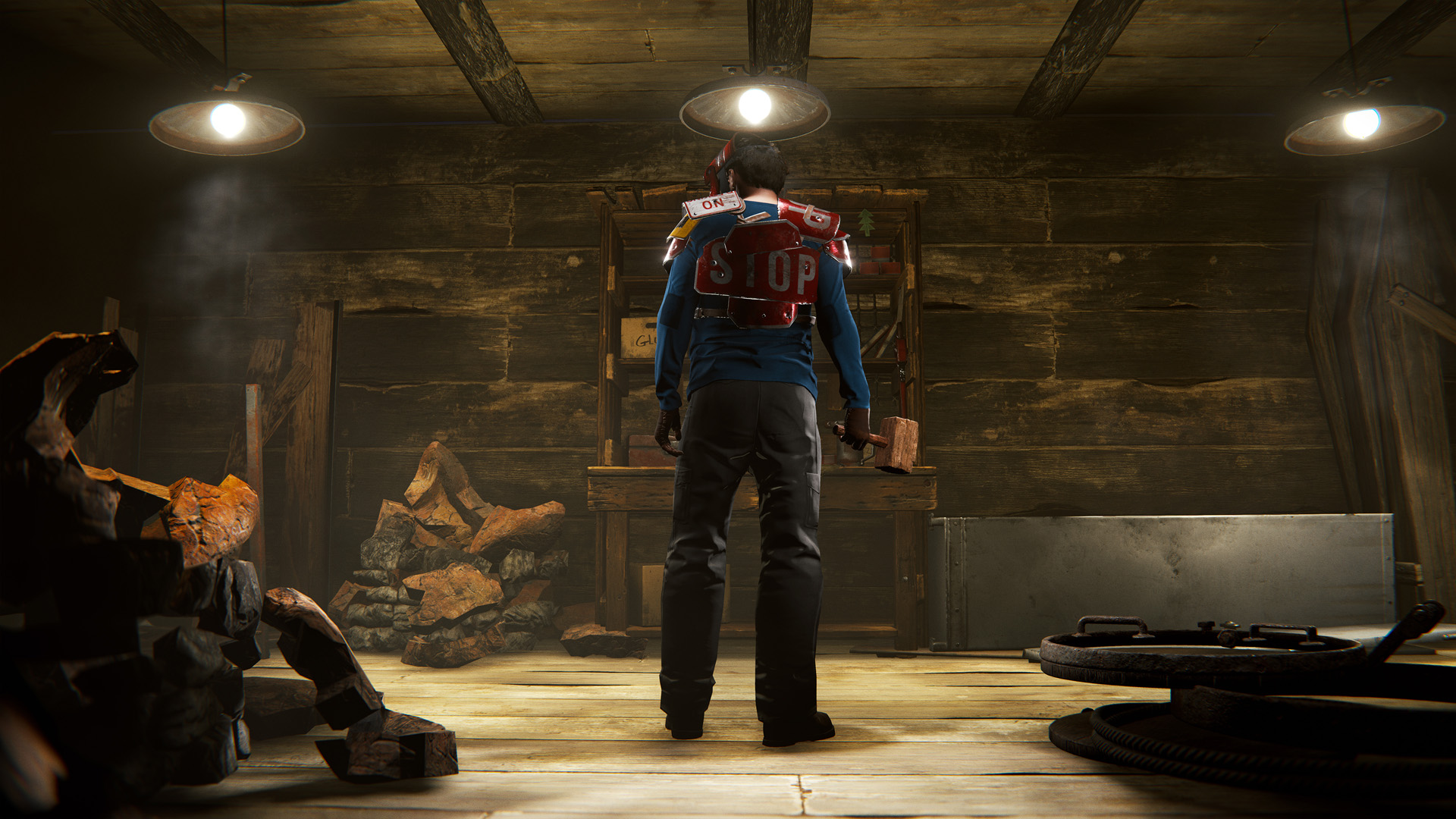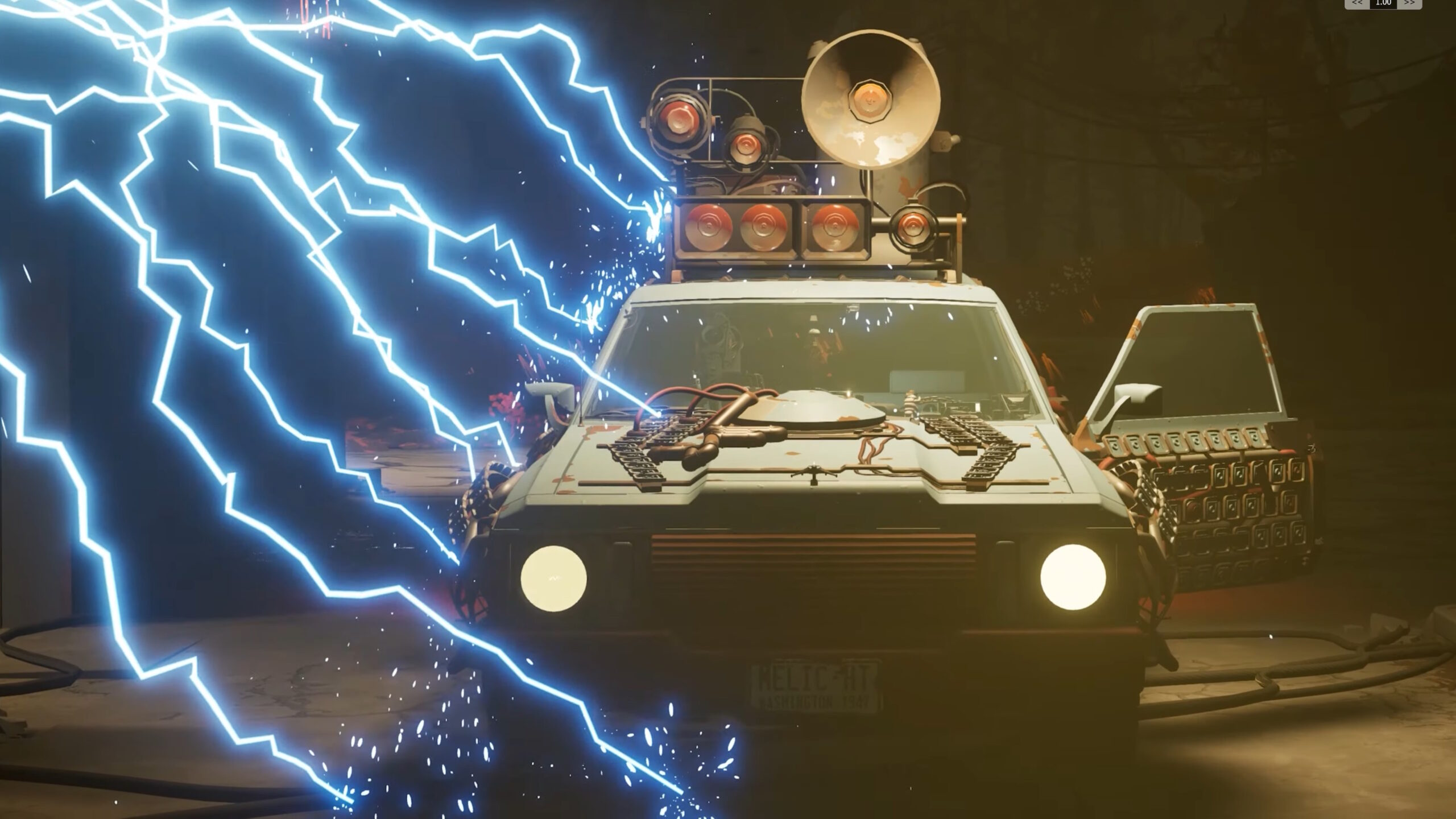September 27 saw the full release of Counter-Strike 2, the latest iteration of and the first direct sequel to the greatest competitive FPS ever made. Despite the number, it is the fifth game in the main Counter-Strike series, which began in 1999 with a mod for Half-Life. Valve quickly hired the mod’s creators after its release, and launched Counter-Strike as a standalone game in 2000.
Counter-Strike’s subsequent journey is an article unto itself, but the last and most significant stop before CS2 was Counter-Strike: Global Offensive, released in 2013 and built-upon in a pioneering fashion: and a game that was, until CS2 at least, the biggest and most exciting esport in the world, peaking toward the end of its life at an incredible 1.8 million daily players.
We had the opportunity to speak to the CS2 development team at Valve to ask about the past, present, and future of one of the greatest PC games ever made.
PC Gamer: Over CS:GO’s lifespan it changed enormously, and Valve clearly learned a ton that went into Counter-Strike 2. It proved to be a much more dynamic game over its lifespan than previous iterations of CS, without losing focus on that core competitive mode: Did this occur organically or was it always conceived as a 10-year project?
CS2 Dev Team: Well, CS:GO certainly wasn’t released with a specific timeline in mind! We couldn’t have predicted how massive the audience would become over ten years. But the plan from the start was a long-term commitment to the game’s development, and the decision to move to CS2 came out of that same broader commitment to Counter-Strike. CS:GO was an incredible game, but its development was fundamentally limited by aging technology.
As the rest of Valve transitioned to developing on the Source 2 engine, it became apparent that the best way to continue supporting CS was to do the hard work of rewriting the game on the new engine. It’s easy to think about a new engine in terms of graphics, gameplay, and all of the tangible differences between CS:GO and CS2, but to be honest the biggest upgrade is the fact that we will be able to continue supporting CS for many years to come.
That number “2” is a big statement of intent, establishing CS2 as the first direct sequel in Counter-Strike’s 23 year history. Why make this distinction?
CS2 is truly the largest technical leap forward in Counter-Strike history. The game is built on an entirely new engine with fundamental changes to nearly every system. Every map was reauthored in the new engine, every weapon model, every animation, every sound. Even the way players find matches has gotten an update—about half of our playtime is now in Premier mode. So much changed from CS:GO that we just couldn’t consider it to be the same game anymore. This isn’t a spin-off—this is the next iteration of main-line Counter-Strike.
Since CS2 released, we’ve seen some players sharing clips of encounters where hits aren’t registering as expected. What do you make of clips like these from players? Are CS2’s sub-tick servers working as intended?
Well, to be clear, those examples aren’t issues with sub-tick servers. They show a different bug (an animation-hitbox mismatch when looking down), but the important thing is that those clips helped us isolate the specific bug and ship the fix to customers quickly. Bugs like that are unfortunate but detailed community feedback is incredibly helpful.
As to your question about sub-tick servers, the goal of sub-tick is to give everyone a consistent, tick-independent experience that’s better than CS:GO’s 64 or 128 tick experience. For the most part the system works as intended, but as we rolled out the feature to more and more people we got feedback, like those clips, about systems that weren’t reaching their goals. The CS community is understandably focused on both differences and bugs that affect their experience, and we’re working hard to address them.
Launch and year one
“The introduction of skill-based matchmaking to CS:GO, official 5v5 matches with visible skill groups, was a turning point for the game.”
Valve
What are the plans for CS2’s first year?
One of the most exciting elements of a new release is seeing, finally, how players approach the game. They fundamentally change our view of what to prioritize and how the future might look. For example, Premier matchmaking is now the most popular mode in Counter-Strike, which we didn’t predict. So we’re keeping our first year plans flexible as we balance our ability to respond to urgent player needs with the long list of other features we’d love to ship.
There’s been a significant backlash to NFTs in the gaming community, and of course games that feature NFTs and cryptocurrency aren’t allowed on Steam. One of the promises of NFTs is the notion of being able to take valuable in-game items from one game to the next. Counter-Strike 2 is perhaps the first game to actually achieve this. What do you make of CS2 validating this concept of players retaining inventories across different games?
From the start of development we knew that CS2 would ultimately replace CS:GO, and we wanted to ensure that players could keep as many of their CS:GO skills and items as possible. So, early into the process we started the work to support all of the CS:GO weapons, stickers, agents, and music in CS2. There were non-trivial challenges in getting older items to fit into the look and feel of the new game, but the feature was something we knew would be very important to players. For us, bringing the items forward is just the customer-centered way to bridge between a game and its successor. Sometimes people talk about NFTs in the context of Counter-Strike items, but to be honest we don’t know enough about NFTs to weigh in on that conversation. We just try to make the best decisions we can about the things our players care about.
Has the launch been a success, and is there anything in hindsight you’d have done differently?
The launch has been an overwhelming success, and the player numbers are still humbling [CS2’s site shows the game has 31.5 million monthly players]. Believe it or not, one of the biggest successes was the Limited Test. Getting the game into players’ hands quickly and early gave us hugely valuable feedback that drove many of our decisions leading up to release. So we were very happy with the process that led us from early development to limited test to release. As to what we’d have done differently, we could have handled our communication over the system requirements for CS2 better—we should have let affected players know earlier in the process.
We know there’s a conversation about whether the Limited Test should have been longer. For sure, there are some features that would have been included in CS2 at launch if we had a longer beta. But over time, it’s not clear what the priorities should be when you have an ever-shrinking and self-selecting subset of the community participating. And without everyone playing the same game, we couldn’t make much progress on the most critical systems like networking, performance, and core gameplay. Since we’ve launched, we’ve been getting feedback about new bugs, behaviors, and issues from players at every level, from casual players on older hardware to the pros.
Launching the game has massively accelerated the pace of improving CS2, so we think that launching when we did was the right time, even if the landing was (and still is) bumpy. Ultimately, this is the fastest way to get CS2 to where we all want it to be one or five or ten years from now.
(Image credit: Valve)
Guns, modes, and maps
You’ve very slightly reduced the spray of every rifle in the game. Why?
In CS:GO, players were split between 64 and 128-tick servers. Tick rate affected CS:GO in several ways, including how grenades were simulated and the spray patterns for weapons, and players had difficulty switching between the two environments.
A goal of CS2 was to unify those two groups, and sub-tick servers are an important step toward that goal. The sub-tick servers separate gameplay from tick boundaries, which lets us fine-tune gameplay toward whatever specific standard we want. So, to get back to your question, the spray patterns look slightly reduced compared to 64-tick CS:GO, because as a general rule we’ve tried to match the 128-tick behavior when possible, and 128 tickrate CS:GO sprays are roughly the size you currently see in CS2.
Do you intend to introduce new weapons over CS2’s lifespan?
Yes. It’s not the top priority at the moment, but we absolutely plan to introduce some new weapons for CS2. We’re always looking for ways to give players more interesting decisions to make in the game, so we’ll typically look at cases where players either don’t have the right tools to approach a situation, or have only one or two tools available. Where is the gameplay getting stale? What kind of weapon might shake up the status quo?
Over the ten years of CS:GO we learned some occasionally painful lessons about how to gracefully introduce a new weapon to the game. We think we have a handle on how to approach this in the future, and with the customizable loadouts in CS2, shipping weapons should be even more straightforward.
(Image credit: Valve)
“Everything before [Dust 2] didn’t work quite right, competitively, and everything that came after was influenced by it.”
Valve
CS2’s release thus far has focused on the competitive side of the game. A lot of stuff people loved about the previous games hasn’t yet appeared, whether that’s modes like Arms Race or particular community maps and things like surfing: What’s the plan here?
Those modes haven’t been forgotten! We have plans to re-introduce popular game modes and explore others. That being said, all game modes, regardless of their rules, fundamentally depend on solid core gameplay. So in the short term we have been keeping our development focused on the spaces where players spend the overwhelming amount of their collective time. It’s a trade-off, and understandably frustrating for players who primarily enjoyed other game modes, but we believe this is the best approach for the long-term success of CS2.
Why has Dust 2 survived this long? I know it’s almost a joke now and there are easy answers about asymmetry etcetera but what has made this the iconic FPS map?
Dust 2 nailed the formula of the competitive CS map. It has good distances between bomb sites and team spawns, and there are enough routes to allow changing tactics but not so many that you’re never committed. It’s minimalist and noob-friendly, and it’s the perfect canvas for showing off your skills. Everything before it didn’t work quite right, competitively, and everything that came after was influenced by it.
The contemporary mainstream FPS defaults towards “aim downsights” shooting, whereas in CS only guns with sights do that. Has the CS dev team ever considered a radical shakeup of the shooting basics, or do they think these classic principles will stand another ten years?
We’d probably think about it in the opposite direction: what problem does aiming downsights solve, and do we have that problem? On consoles, ADS is a great solution to the difficulty of aiming with a controller. You can hide an auto-aim snap to the enemy in the transition, reduce controller sensitivity to make aiming easier, etc. But those aren’t gameplay/input problems that PC players have and, more importantly, it’s not something our players are expressing any concern about. So we don’t have any plans to change the basics in CS2.
What are the three important things every Counter-Strike map should have?
Players, players, and players. Every great Counter-Strike map started off as a not-great Counter-Strike map, and the difference has always been player feedback. No matter how much internal testing we do with our maps, we can never match the feedback we get from millions of players throwing millions of smokes or jumping on every conceivable surface. That feedback instantly makes the maps that much better.
And beyond our team, the most successful community map makers excel at getting their early ideas into players’ hands quickly and iterating on their feedback. We’ll try to get their maps in front of as many players as possible, and we can’t wait to see what they create for CS2.
How has the Community Market for items reacted to the release of CS2? Did you notice any particular data or changes in the item market that surprised you?
We generally only look at market prices when we’re thinking about shipping new stuff and want to understand players’ preferences. Players’ interest in items fluctuates over time for many reasons so outside of that context we try not to read too much into temporal changes. And as we were leading up to CS2 we were focused on other areas of the game, so while there may have been lots of interesting things going on in the market, we weren’t paying attention.
(Image credit: Valve)
The future of Counter-Strike
“Just as CS:GO’s final form was the culmination of a decade of experiments, CS2’s future isn’t set in stone.”
Valve
What’s the one change in CS2 that won’t make any headlines, but is going to be most important for the long-term health of the game?
Better tools were the foundation of Source 2; they’re how we updated and improved all of the content that you see in CS2. And those tools are now available to every artist in the Counter-Strike community. The tools don’t get a lot of headlines, but they’re the key to all of the community content that will shape CS2 in the years to come.
Looking over CS:GO’s lifespan and development with hindsight, what was its greatest success and its greatest misstep?
We ran lots of experiments in CS:GO, and by far the most successful experiment was our first: the introduction of Matchmaking. The introduction of skill-based matchmaking to CS:GO, official 5v5 matches with visible skill groups, was a turning point for the game and the broader CS community. Not only was it instantly the most popular Counter-Strike game mode, but it also drove a massive increase in player retention. From that point forward, CS:GO’s player base grew at an incredible rate, and we never looked back.
Missteps? How many pages do we get? We’ve had plenty of missteps over the years. Usually they came from us failing to follow our own process of listening to the community and understanding their needs, but sometimes they came from us having a process that wasn’t particularly good in the first place.
For example, when we launched the R8 pistol it had some significant bugs. Those bugs were fixed the next day (and the weapon’s damage was lowered the day after that), but because the gun was introduced in every game mode, that period affected everyone and was very disruptive. Among the many things we learned from the R8 was to be more careful in shipping new (or major changes to) weapons, to let players put them through their paces before making them available everywhere.
How different do you expect CS2 to look in 10 years?
We should all expect CS2 to look very different in 10 years. Just look at how much CS:GO changed! But just as CS:GO’s final form was the culmination of a decade of experiments, CS2’s future isn’t set in stone. We don’t have a specific vision that we’re trying to realize, but rather a process we want to continue to execute for many years. We’ll continue to explore all of the opportunities that come with the game and its amazing community, to experiment with new ideas, and to do the hard work necessary to make CS2 the place every FPS fan wants to be.


